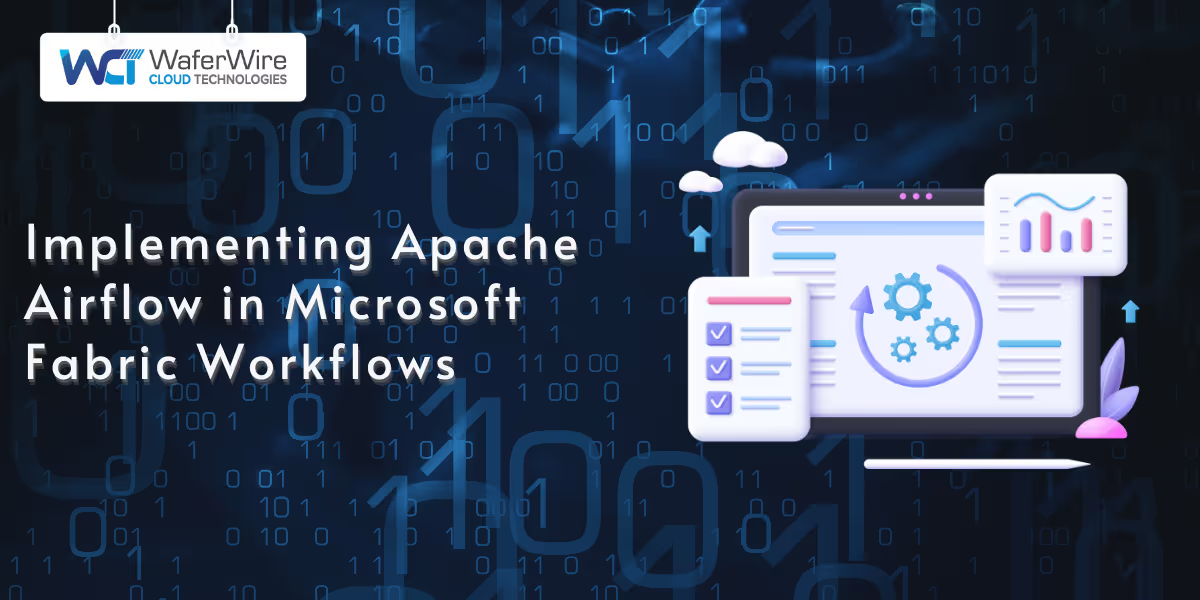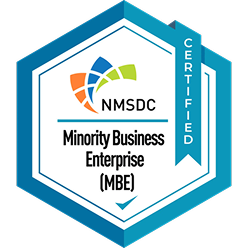

Managing complex data workflows can be challenging for businesses of all sizes. Enterprise companies in retail, manufacturing, financial services, and utilities handle massive volumes of data and require reliable methods to automate data processing steps. Microsoft Fabric, a unified Software-as-a-Service (SaaS) analytics platform, now includes Apache Airflow as a built-in feature for workflow orchestration. This means organizations can use the popular open-source Airflow tool inside the Fabric environment to schedule and monitor their data pipelines.
In simple terms, Microsoft has integrated Airflow’s power into Fabric, allowing you to manage all your data tasks in one place. This integration, often referred to as Microsoft Fabric Airflow, enables teams to automate everything from data ingestion to machine learning model training with ease, utilizing Airflow’s familiar Python-based workflows while eliminating the headache of managing infrastructure.
In this blog, we’ll break down:
Microsoft Fabric is a cloud-based data analytics platform from Microsoft that provides a unified ecosystem for all kinds of data work. It evolved from the Power BI platform, expanding to include tools for data integration, storage, engineering, science, and business intelligence.
In Microsoft Fabric, you get multiple built-in services under one roof, for example:
Apache Airflow is an open-source workflow orchestration tool originally created by Airbnb and now widely used in the industry. In simple terms, Airflow helps you automate and schedule sequences of tasks (jobs) so they run in the right order, at the right time, and with the proper dependencies. You write these workflows in Python code as Directed Acyclic Graphs (DAGs), where each node in the graph represents a task and the edges define the order and dependencies.
Some key features and concepts of Airflow include:

In short, Apache Airflow lets engineers programmatically define complex processes that might involve multiple tools or data sources, and ensures those processes run reliably. It is popular for coordinating data pipelines, machine learning workflows, and other automated processes in tech companies.
Microsoft Fabric has integrated Apache Airflow as a first-class service within the Fabric environment. This new capability is often referred to as Apache Airflow Jobs or Data Workflows in Fabric’s Data Factory
Here’s a simple view of how it works:
When you create an Airflow job in Fabric, the system instantly provisions a ready-to-use runtime. No setup. No infrastructure overhead. It comes preloaded with everything—scheduler, workers, and a web UI. You can start building workflows in less than a minute. Microsoft handles scaling, patching, and uptime behind the scenes.
You create your DAGs straight in the Fabric portal by utilizing the integrated code editor. If you favor Git, syncing with a repository from GitHub or Azure DevOps is available. After deployment, you can monitor your workflow runs within Fabric or access the native Airflow UI for in-depth oversight. Single sign-on is seamlessly implemented through Microsoft Entra ID, allowing your team to log in using their organizational accounts.
Fabric Airflow environments scale automatically. If your workflows initiate 20 tasks simultaneously, the system automatically scales up to meet the demand. When nothing's running, it powers down to save costs. This “auto-pause” feature is great for dev and test environments. For production, you can configure always-on setups or fixed-size worker pools based on your workload needs.
This isn’t a watered-down version. It’s the real Apache Airflow, compatible with existing DAGs, operators, and plugins. You can bring in your libraries, install packages, and use custom operators like dbt, just like you would in a self-hosted setup.
Microsoft also includes enterprise-grade features like:
Fabric Airflow integrates seamlessly with your organization’s current access controls. Workspace roles and Entra ID manage permissions, eliminating the need for shared secrets or workarounds. When your Airflow DAGs need to connect with Fabric services like OneLake or execute pipelines, they can do so securely by utilizing managed connections and access tokens.
Setting up Apache Airflow in Microsoft Fabric is straightforward, especially compared to initiating Airflow from scratch. Here’s an overview of the typical steps to get a workflow running, as outlined by a data engineer who has tried it.
Check if the Apache Airflow Job option is enabled in your Fabric Admin settings.
Go to Admin Portal → Tenant Settings → Users can create and use Apache Airflow Jobs.
If you don’t see the option, ask your Fabric admin. Many workspaces already have this enabled by default.
Inside your Premium capacity workspace, select New → Data Workflow.
Give it a name. Within seconds, your Airflow environment is ready. No provisioning, no containers. You now have a fully managed Airflow instance.
To let Airflow interact with Fabric tools (like triggering pipelines or notebooks), you'll need to:
This setup enables Airflow to communicate securely with Fabric using tokens instead of passwords.
If your team stores DAG code in GitHub, Azure DevOps, or other Git services, link it to your Airflow instance.
Once linked, Fabric automatically pulls your latest DAGs. This keeps your workflows in sync and version-controlled, making them ideal for collaboration.
Use the built-in Fabric code editor or your local IDE to write your DAGs.
You’ll store .py files inside the Airflow environment’s dags/ folder.
Fabric comes with a built-in plugin—apache-airflow-microsoft-fabric-plugin—so you can easily:
Once your DAG is ready:
You can monitor job status in two ways:
Each task log is stored and easily accessible for inspection. Fabric also supports streaming these logs into external monitoring systems if you need central logging.
Now that you have seen how easy it is to set up and run workflows, let’s look at what you gain by using Microsoft Fabric Airflow.
By using Microsoft Fabric Airflow, you unlock several key benefits that enhance how your data workflows run, scale, and integrate.
Fabric brings everything together. Your data storage, ETL pipelines, analytics, and now Airflow scheduling are all in one place. This unified setup makes it easier to manage and collaborate. Imagine a data engineer scheduling a data prep job, and a data analyst immediately using those results in Power BI—without jumping between platforms. It’s seamless.
With Fabric Airflow, you get the full power of Python. Unlike simple drag-and-drop tools, Airflow lets you implement complex logic, loop through tasks, or integrate with third-party APIs. If you can code it in Python, you can automate it. For complex functions, such as custom data transformations, this flexibility truly shines. Airflow’s Python-based approach means you’re not limited by a visual interface.
Forget about managing servers. Fabric automatically scales your workflows as needed, whether it’s running a few tasks or hundreds of functions in parallel. And when nothing is running, Fabric automatically pauses to save costs. This means your team doesn’t need to worry about infrastructure or downtime. Microsoft handles updates, scaling, and failovers, allowing your team to focus on what matters: building great workflows.
Airflow in Fabric works seamlessly with Azure Data Lake, Power BI, and Azure SQL. You can pull data, trigger pipelines, and generate reports without the friction of using separate tools. Plus, Microsoft’s Entra ID integration ensures that security and permissions are consistent across your workflow. It’s all linked so that you can work securely with fewer headaches.
Already using Apache Airflow? Transitioning to Fabric is quick. You can reuse existing DAGs and Airflow operators—no need to retrain your team. Fabric even provides a smooth path for migrating workflows from Azure Data Factory to Fabric Airflow, letting you work with what you know.
Fabric Airflow provides you with the tools to monitor your workflows closely. You’ll know if a task succeeds or fails. With built-in retry logic and alerts, you can ensure that your workflows continue to run smoothly. Transparent logs and metrics also aid in debugging, allowing you to identify and resolve problems early and maintain reliable operations.
Having covered the key benefits of Microsoft Fabric Airflow, let's now compare it to other workflow tools like Azure Data Factory and self-managed Airflow to see which best fits your needs.
Tool/Approach
Description
Strengths
Limitations
Fabric Data Factory Pipelines (No-Code)
Visual drag-and-drop pipeline builder in FabricEasy for non-coders, quick setup for standard ETLLimited flexibility for complex workflows, less ideal for Python-based customizationMicrosoft Fabric AirflowManaged Airflow service integrated into Fabric
Python code-based, scalable, secure, no infrastructure to manage, works well for complex logic
Slight learning curve for non-coders; requires OAuth setup for secure Fabric access
Self-Managed Apache AirflowAirflow is installed and run on VMs, containers, or KubernetesComplete control, open-source, customizable
Requires setup, monitoring, scaling, and high availability managementGoogle Cloud ComposerManaged Airflow services from Google
Simplifies Airflow management, auto-scaling
Not deeply integrated with the Microsoft/Fabric ecosystemAzure Logic Apps / Power Automate
Workflow automation tools for app-level integrations
Great for business processes, easy to set up
Not built for data engineering or heavy batch processingAzure Synapse Pipelines
No-code pipeline builder for data transformations (now under the Fabric umbrella)Visual, user-friendly
Limited for custom code or logic-heavy workflowsDatabricks Jobs/Workflows
Schedules Databricks notebooks and workflows.
Ideal for ML/Data Science tasks on Databricks
Tied to the Databricks platform, limited cross-system orchestration
Cron Jobs / Scripts
Legacy approach using cron on Linux servers or manual scripts
Simple, lightweight for small tasks
Lacks monitoring, retry logic, dependencies, scalability, and visibilityPortability and Vendor Lock-InAirflow DAGs remain portable across platforms, even if built in Fabric.
Open-source format, reusable DAGs; Microsoft provides migration tools
Only Fabric-specific operators would need adjustment if moving away from the Microsoft ecosystem.
Are you struggling with unreliable, hard-to-manage data pipelines? By integrating Apache Airflow into Microsoft Fabric, your team can automate complex workflows with the reliability of a cloud-native platform, eliminating the need to manage infrastructure.
Why This Matters for Your Business
With Microsoft Fabric Airflow, you get the best of both worlds: the flexibility of Python workflows and Microsoft’s secure, scalable platform. This powerful combination enables you to automate your entire workflow—from raw data ingestion in Fabric Lakehouse to analytics-ready datasets. You’ll also reduce operational risks thanks to built-in monitoring, retries, and alerts, ensuring your mission-critical processes run smoothly. The seamless integration with Microsoft tools, such as Power BI, Azure Synapse, and Teams, enables better collaboration and informed decision-making across your teams.
Why WaferWire?
At WaferWire, we are more than just a consultancy. Our team comprises certified Microsoft Fabric experts and experienced Airflow specialists, bringing over five years of expertise in optimizing workflows for performance and cost efficiency. We also offer industry-specific solutions, featuring proven frameworks for sectors such as healthcare (HIPAA) and finance (SOX), ensuring compliance and security.
Contact us and we’ll get back to you within 24 hours with a customized use-case analysis and a no-pressure technical consultation.

